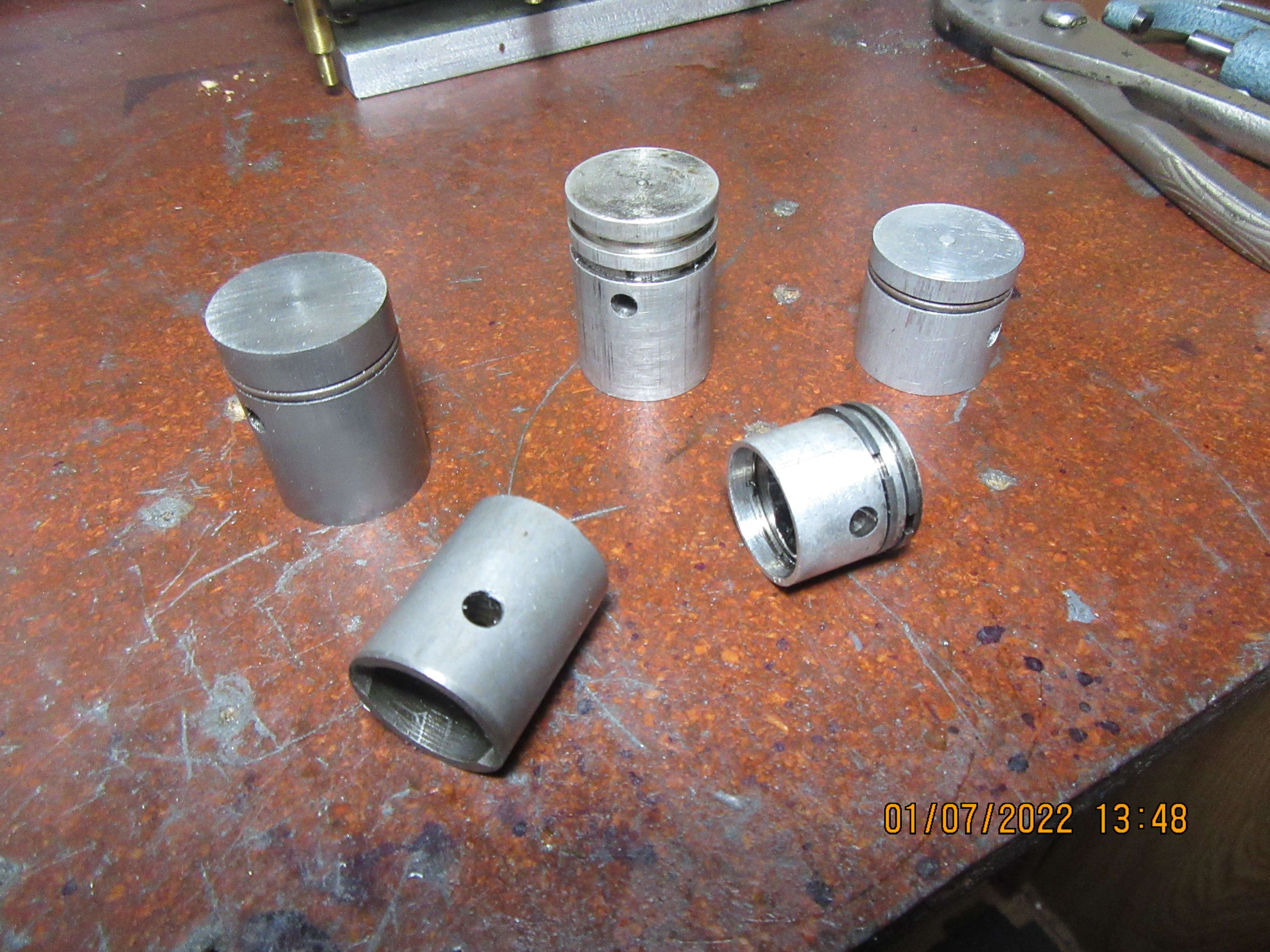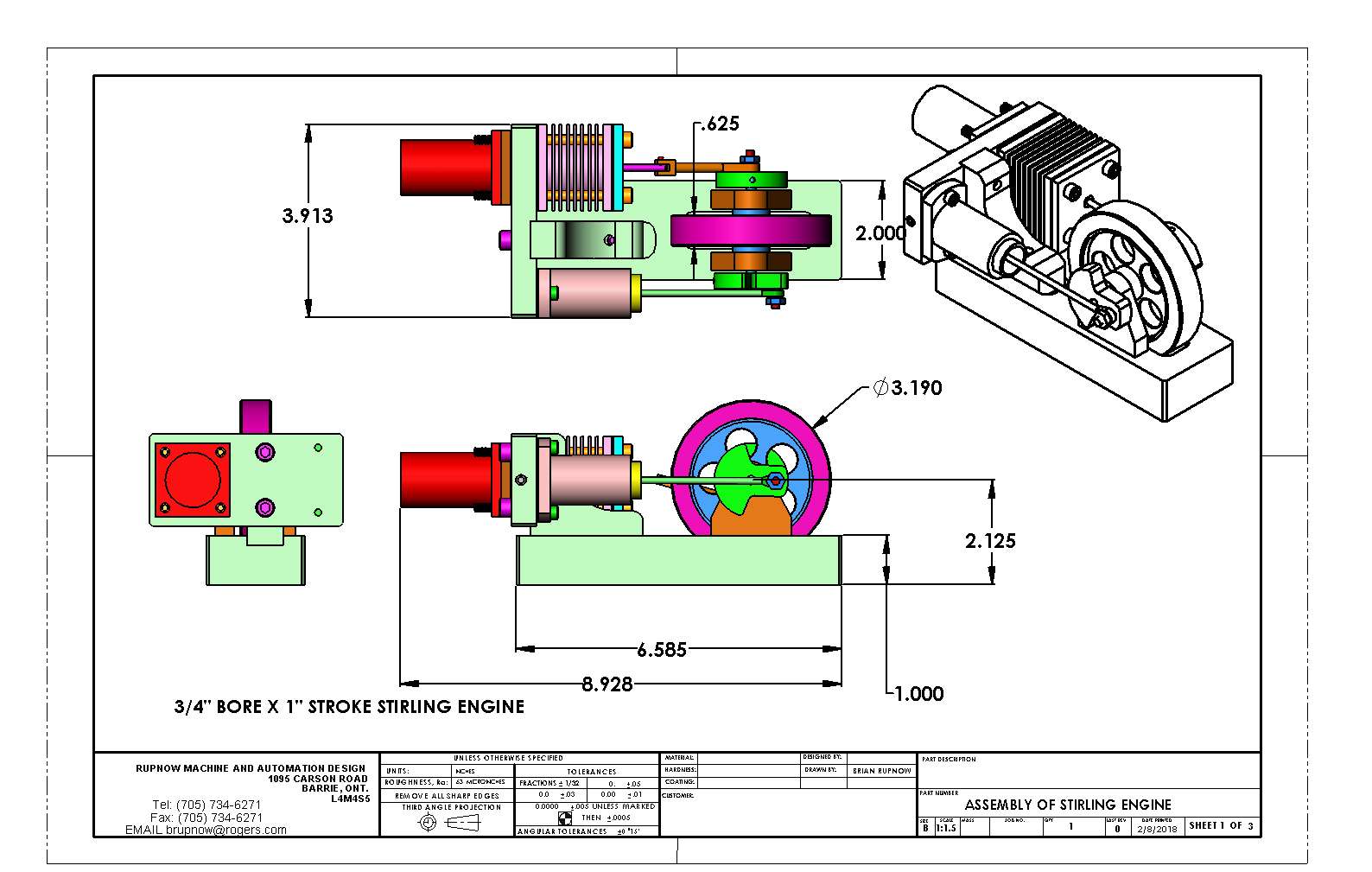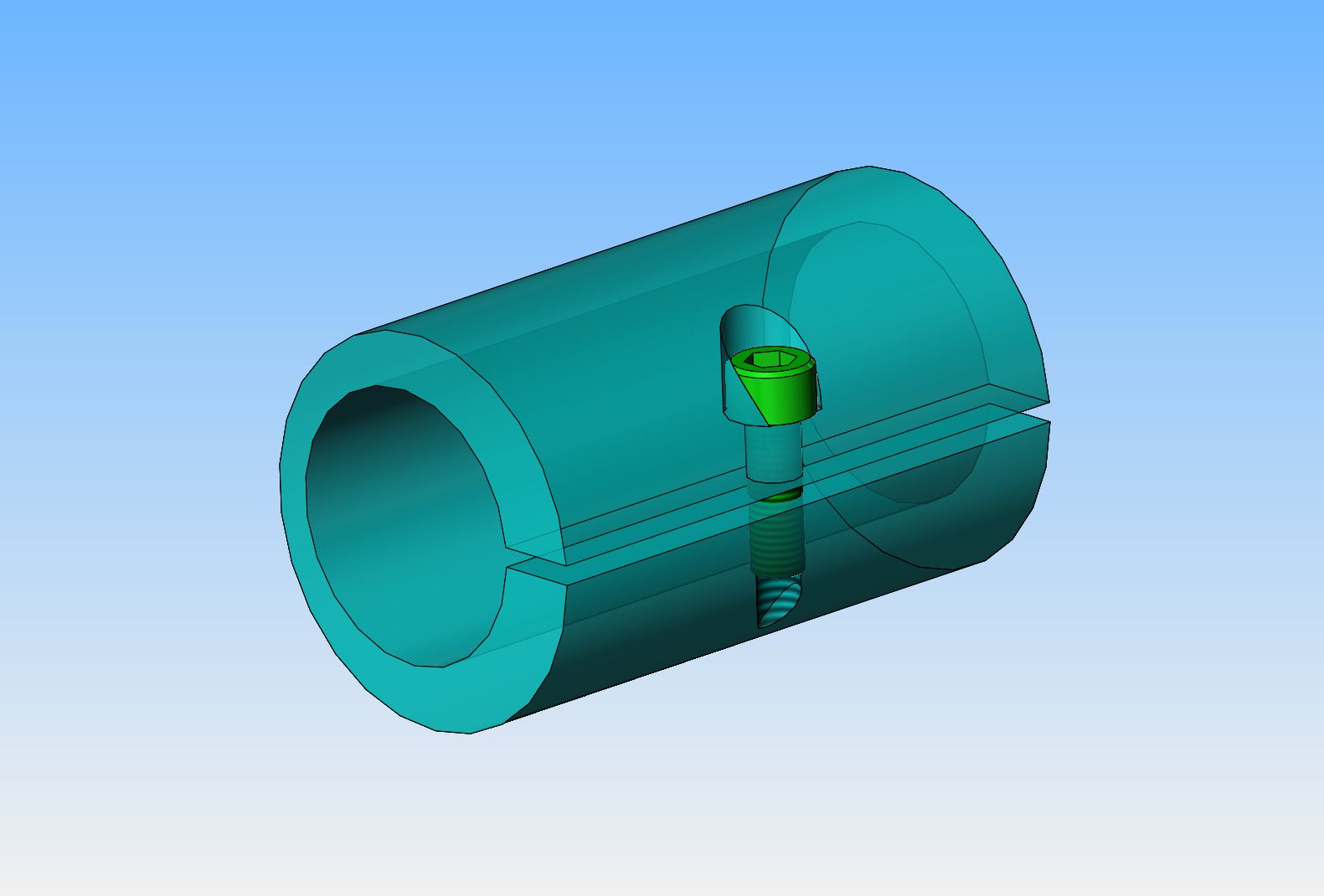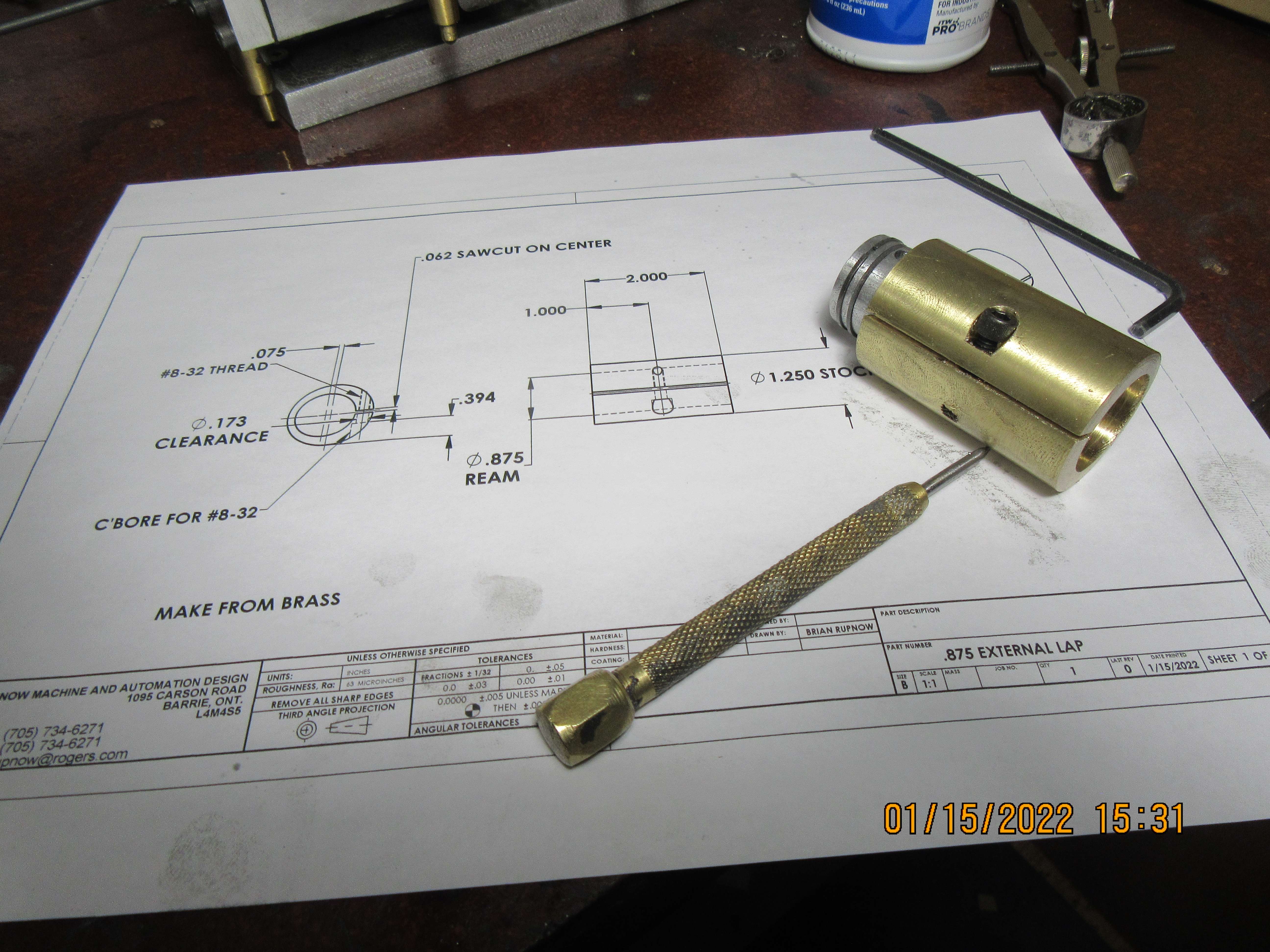Today I'm just piddling around putting in time. I had to look thru all my various bins of junk to find something, and what I actually found was a plethora of pistons. I see two with Viton rings, one with cast iron rings, one with no rings, and one that had been lapped into a cylinder without even any ring grooves. I have no idea why I saved these, nor what was wrong with them. I guess it's part of the "Never throw anything out" syndrome that I have. I'll keep them. Most of them have a thick enough wall that I could perhaps use them in an engine with a 31/32" bore some day.









